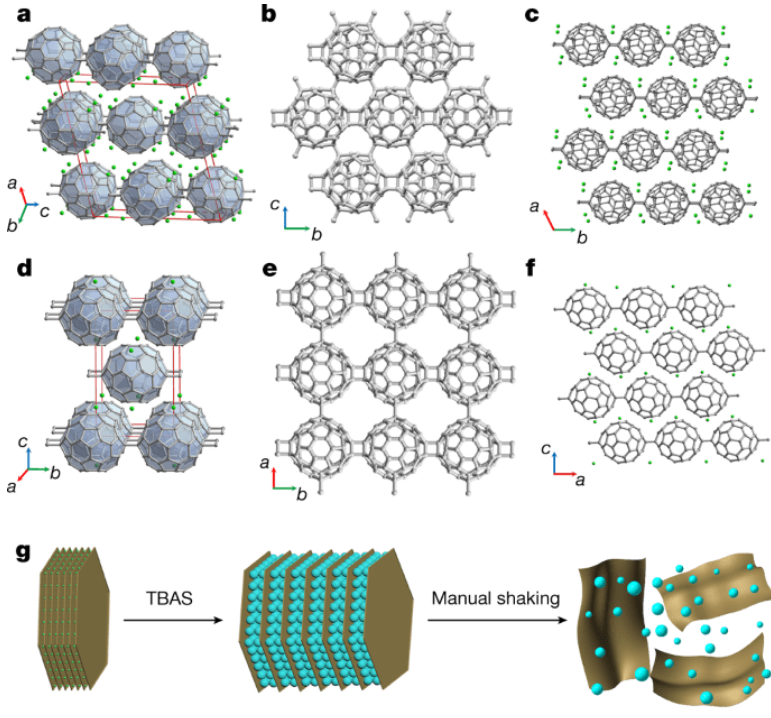Fullerenes, carbon nanotubes, graphene, graphite alkyne... Carbon has always been regarded as a kind of material of the future, and the discovery of each new carbon material has triggered the research upsurge of material scientists. Today, the carbon family added a new member - researcher at the institute of chemistry, Chinese Academy of Sciences, Mr. Zheng team ten years grinding sword, with simple reaction under atmospheric pressure condition, had created a new type of carbon allotropes single crystal "C60 single polymerization", it has high crystallinity and good thermodynamic stability, provides a new train of thought in the research of carbon materials.
The research was published in nature, an international academic journal, on March 16, drawing attention from the international and material science circles.
Substances composed of the same element, due to the different arrangement of atoms, show different physical and chemical properties, we call them allotropes. Soft graphite, hard diamond, etc., are allotropes of carbon with different important applications. But all of these materials exist in nature, and scientists have long been looking for the possibility of building new materials out of carbon atoms and customizing them to our needs.

"In the past, the idea of preparing pure carbon materials has been to use carbon atoms as basic units to build." Zheng jian explained that he led his team to creatively use C60 molecules instead of carbon atoms as the basic unit. Under mild conditions at room temperature and pressure, C60 molecules are polymerized by doping magnesium metal, and then the magnesium metal is removed by organic cation slicing strategy, and finally the monolayer polymerization OF C60 is obtained.
This is a novel clustering two-dimensional superstructure, which is composed of C60 clusters covalently bonded to each other in plane by C-C bonds to form regular topological structure. "It took us five years to get this stable structure." Zheng said that a C60 molecule has 60 carbon atoms, and to achieve a stable structure, carbon atoms in adjacent molecules form stable links. Dr Hou Lingxiang, first author of the paper and a member of Zheng's team, said: "There are too many possibilities, but there is only one right path, otherwise C60 molecules will not connect as designed, making it difficult to measure its size and properties. We tried a lot of things, made a lot of samples, took a lot of detours." The painstaking research paid off: multiple characterization measurements showed that the new material was the target for Zheng's team, which pioneered a new way to make carbon.
At the same time, the measurement results also found that the new material is a typical semiconductor, and has good thermodynamic stability, still stable at about 326.85℃. "We believe this new material has important applications in nonlinear optics and functionalized electronic devices, as well as potential applications in superconductivity, quantum computing, spin transport, information and energy storage, catalysis and other fields," Zheng said. Next, the team will delve into the properties of this new material to explore more application scenarios and greater application value.
